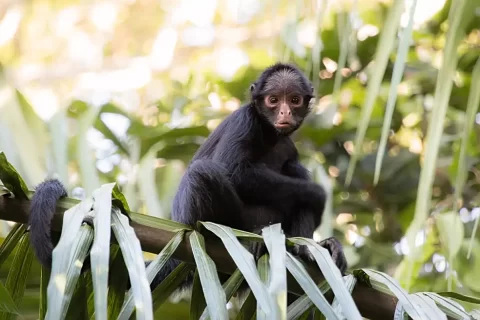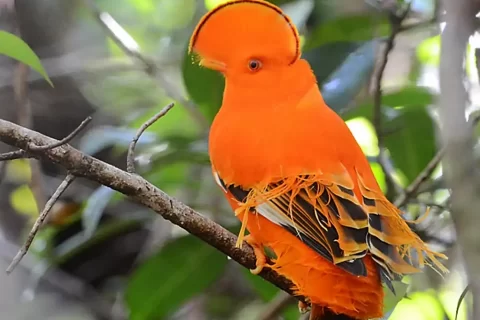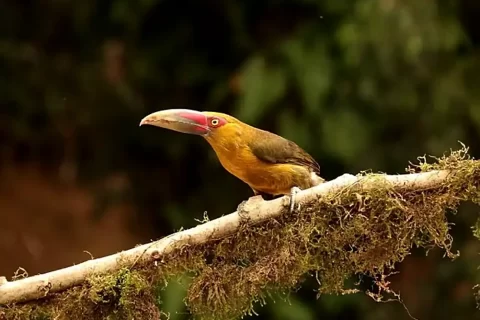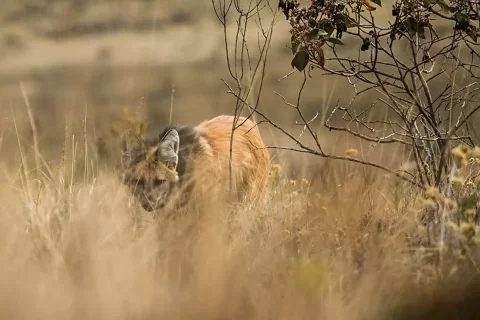Best time of year:
May – December
Duration:
5-6 days
Difficulty:
Medium. Long days in the field, mostly trail-based birding. Some trails have steep sections.
Accommodations:
Simple but comfortable guesthouse with en-suite rooms and fans.
Starts in:
Manaus / Itaituba
Ends in:
Manaus / Itaituba
Tour Overview
Amazonia National Park is without a doubt one of the best birding destinations in all of Brazil, and somehow it is, at the same time, also one of the most under-appreciated sites in the Amazon. Situated along the lower Tapajós river south of the town of Itaituba, Amazonia NP covers just over 1 million hectares (2.5 million acres), and was one of the first national parks created in the Brazilian Amazon. In the past, the knock against Amazonia NP was that there was nowhere to stay, and that it was difficult to reach Itaituba. Nowadays, however, Itaituba is served by several flights a week from Manaus and the road from Santarem to Itaituba is good. Moreoever, there are now two simple but comfortable hotels situated just outside the park. Over the course of a four-night stay we should do well on the most localized endemics in addition to a wider range of specialties of the Madeira-Tapajós centre of endemism. It doesn’t hurt that the key birds of Amazonia NP are some of the Amazon’s most spectacular birds — think Golden Parakeet, Vulturine Parrot, Brown-chested Barbet and White-tailed Cotinga, for starters. The park has a good system of excellent forest trails, and we’ll spend most mornings deep in the forest searching for Pale-faced Bare-eye, Harlequin Antbird, Black-bellied Gnateater and more. Amazon birding is challenging, but the rewards are well worth the effort!
Itinerary
Day 1: Arrival in Manaus.
Today is an arrival day in Manaus, the largest city in the Amazon and capital of the state of Amazonas. Depending on arrival times, optional afternoon birding at Adolpho Ducke Reserve, or sightseeing in Manaus including visit to the Teatro Amazonas Opera House.
Night in Manaus.
Day 2: Fly to Itaituba. Travel to Amazonia National Park.
Morning flight from Manaus to Itaituba. Travel to Amazonia NP (50 km from Itaituba). Afternoon birding on Transamazônica within the park.
Night in Vila Rayol just outside Amazonia NP.
Days 3 – 5: Amazonia National Park.
Three full days to bird in Amazonia NP, one of the best birding sites in the entire Brazilian Amazon. The park has several excellent birding trails into pristine terra firme rainforest with a rich variety of micro-habitats from vine laden upland forests, to vast stands of açaí and babaçu palms, to stunted forests on sandier soils. The park bird list exceeds 500 species, headlined by one of the most spectacular birds in the Amazon, the stunning Golden Parakeet. This endemic parakeet sports Brazil’s national colours and is somewhat nomadic, roaming widely in the park in search of food, meaning we may need to work to find it. Thankfully the parakeets have a distinctive, far carrying voice which typically belies their presence , and during a stay of three nights we stand an excellent chance to encounter the species. The park is also home to a number of endemics restricted to the Madeira – Tapajós interfluvium or the eastern Amazon more generally, including a couple which are found only on the lower Tapajós river (Brown-chested Barbet and Harlequin Antbird): these include the bizarre Vulturine Parrot, Crimson-bellied Parakeet, White-crested Guan, Dark-winged Trumpeter, White-tailed Cotinga, Black-bellied Gnateater, Pale-faced Bare-eye, Ihering’s Antwren, Alta Floresta Antpitta, and Snow-capped Manakin, while more widespread Amazonian birds we’ll target include Rufous-necked and Collared Puffbirds, Green-tailed Jacamar, Fiery-tailed Awlbill, Rusty-belted Tapaculo, Banded Antbird, Wing-banded Antbird, Ferruginous-backed Antbird, Flame-crowned Manakin, Rose-breasted Chat and more.
Nights in Vila Rayol just outside Amazonia National Park.
Day 6: Final morning at Amazonia NP. Return to Itaituba and fly to Manaus.
Depending on flight scheduling, we expect to have a final full morning in the park to track down any remaining target species. After lunch return to Itaituba for evening flight to Manaus.
Night in Manaus. End of tour.
Possible Extensions and Additions
Monte Alegre & Tapajós National Forest
It is possible to visit Amazonia National Park by flying into the city of Santarém, rather than Itaituba. Being a larger city, Santarém receives more flights than Itaituba allowing for greater scheduling flexibility. A birder passing through Santarém would be remiss if they did not consider making a short trip to the gallery forests on the north bank of the Amazon around Monte Alegre to look for the localized endemic Sulphur-breasted Parakeet, a bird found only along the north bank of the lower Amazon in Brazil and in the Sipaliwini savannas of southern Suriname. Between Santarem and Itaituba, we can spend a day or two birding the Tapajós National Forest, where a number of specialties not found at Amazonia NP occur, including Bare-eyed Antbird, Blackish Pewee, Opal-crowned Manakin, Yellow-shouldered Grosbeak and Tooth-billed Wren.

















